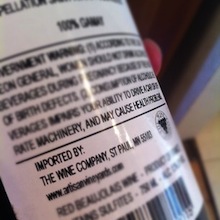How does a tiny family owned winery in the middle of France end up having their wonderful wines shipped around the world directly to Minnesota?
Here is a video outlining how we seek out, taste, and import some of our gems at The Wine Company. Our latest finds are three new Cru Beaujolais, first tasted and discovered by us in February of 2012 — and by September they were on retailer’s shelves and being poured by the glass at some great local restaurants. The process of finding wines like this is pretty cool, and we wanted to share it.
As we explain in the video, traveling to France every year with a specific purpose of exploration of a grape or a region is not just important, but essential to keep our portfolio fresh and vibrant. This year’s goal was clear: bring some great new Beaujolais to the Minnesota market.
Working the way we do on our imports is not easy, cheap, or efficient, but what it does offer us is the opportunity to meet and get to know the families behind the wines. This is important because beyond the business discussions and logistics of shipping, we simply want to get to know the people behind our wines.
PS: Lots of great videos from The Wine Company are available on our YouTube Channel. Please subscribe and enjoy!







